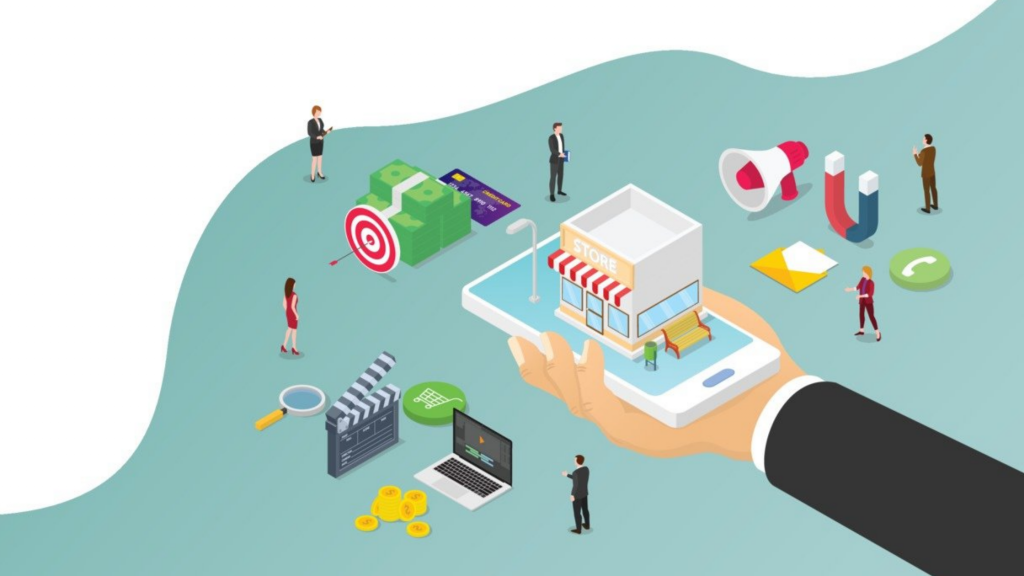Recall the times when shopping involved a visit to the mall? Today’s consumers expect a seamless, integrated shopping experience across all channels – online, mobile, social media, and even physical stores. This is the essence of omnichannel retail, and it’s no longer a trend, it’s a necessity. In this guide, we’ll untangle the maze of omnichannel trends shaping retail in 2024, helping you navigate the ever-evolving landscape and create winning customer experiences.
What is Omnichannel?
Omnichannel, spelled occasionally as omni-channel, refers to a retail strategy that focuses on providing a unified and consistent customer experience across all channels. This means whether a customer interacts with your brand online, in a physical store, on social media, or through a mobile app, they should have a seamless and interconnected experience.
Here’s a breakdown of the key aspects of omnichannel:
- Multiple Channels: It encompasses all the touchpoints where a customer might interact with your business, such as your website, mobile app, physical stores, social media platforms, email marketing, and even customer service channels.
- Unified Experience: The main idea is to make the customer journey feel seamless and consistent across all channels. For example, a customer might look up a product online, check it out in a store, and then buy it through a mobile app. Omnichannel makes sure this process is smooth.
- Customer-Centric Approach: Omnichannel is not just providing different channels. It focuses on the customer. By knowing their preferences and behavior on these channels, you can personalize their shopping experience and meet their unique needs.
Benefits of Omnichannel Retail:
- Increased Sales and Conversion Rates: By making it easier for customers to shop across different channels, you remove friction points and encourage them to complete purchases.
- Enhanced Customer Satisfaction: A seamless and personalized experience leads to happier customers who are more likely to return and recommend your brand.
- Improved Brand Loyalty: Omnichannel builds stronger customer relationships by providing a consistent and positive brand image across all touchpoints.
- Data-Driven Insights: By collecting data from customer interactions across channels, you gain valuable insights into their behavior and preferences, allowing you to tailor your marketing strategies and product offerings more effectively.
Top 5 Omnichannel Trends Shaping Retail in 2024
1. Seamless Shopping Journeys: Weaving the Omnichannel Web
Imagine a customer looking at shoes online and easily reserving a pair to pick up in the store. Or, think of them scanning a QR code in a store to get detailed information and reviews about a product. This shows the strength of a seamless omnichannel experience. By combining online and offline shopping, you create a smooth journey that lets customers shop in any way they want. This might involve features like:
- Click-and-Collect: Allowing customers to purchase online and pick up their items in-store, eliminating the wait for deliveries.
- Inventory Availability Checks: Enabling customers to check online if an item is in stock at a nearby store before heading out.
- Unified Shopping Cart: Ensuring customers can seamlessly add items to their cart across different channels, whether online or in-store using a mobile app.
2. Personalization Powerhouse: Tailoring the Omnichannel Experience
In today’s world, data is very important. Personalization is key. Omnichannel retail uses customer data to create a unique shopping experience. For example, a website can suggest products based on past purchases. Emails can offer discounts on items a customer likes. This level of personalization boosts customer loyalty and sales. Here are some ways to achieve personalization:
- Targeted Email Marketing: Segment your customer base and send targeted email campaigns based on purchase history, browsing behavior, and other relevant data.
- Product Recommendations: Utilize website personalization tools to recommend products that customers are likely to be interested in, based on their past interactions.
- Loyalty Programs: Reward repeat customers with personalized loyalty programs that offer exclusive discounts, early access to sales, and other benefits.
3. The Rise of Social Commerce: Engaging Customers Where They Are
Social media is now more than just a way to connect with friends; it’s also a major shopping platform. Instagram and Facebook are adding features for shopping, such as shoppable posts and live streams. You can browse a brand’s Instagram and buy items you like with a few clicks. This is the future of social commerce, and retailers who use it well will succeed. Here are some ways to leverage social commerce:
- Shoppable Posts: Partner with social media platforms to enable customers to purchase items directly from your posts.
- Influencer Marketing: Collaborate with social media influencers who resonate with your target audience to promote your products and drive sales.
- Live Shopping Events: Host live streaming events on social media platforms to showcase your products, answer customer questions, and generate excitement around your brand.
4. AI-Powered Omnichannel Experiences: The Future is Now
Artificial intelligence (AI) is quickly changing retail. AI chatbots can answer customer questions on websites all day, every day. AI product recommendations show customers items they might like. It can also adjust prices based on real-time market data. These examples show how AI is influencing the future of retail. Here are some additional ways AI can be utilized:
- Smart Search Functionality: Implement AI-powered search bars on your website that can understand natural language queries and provide more relevant product suggestions.
- Chatbots for Customer Support: Utilize AI-powered chatbots to answer frequently asked questions, troubleshoot issues, and provide basic customer support, freeing up human representatives for more complex inquiries.
- Demand Forecasting: Leverage AI to analyze historical sales data and market trends to forecast future demand and optimize inventory management.
5. Embracing Emerging Technologies: The Omnichannel Landscape of Tomorrow
Looking ahead, technologies like augmented reality (AR) and virtual reality (VR) hold immense potential for omnichannel retail. Imagine virtually trying on clothes before you buy them, or exploring a 3D model of a new furniture set to see how it would look in your living room. While still in their early stages, AR and VR offer exciting possibilities for enhancing the shopping experience and driving sales. Here are some potential applications:
- AR Product Visualization: Allow customers to use their smartphones or tablets to virtually place furniture or other items in their home environment to see how they would look and fit.
- VR Showrooms: Create immersive VR showrooms where customers can explore product collections and interact with them in a virtual space.
Building a Data-Driven Omnichannel Trends Strategy
Data is the cornerstone of a successful omnichannel strategy. By collecting and analyzing customer data across all touchpoints, you gain valuable insights into their preferences, buying habits, and overall shopping journey. This data empowers you to personalize the shopping experience, optimize product offerings, and make data-driven decisions to improve your omnichannel strategy. Here’s how to get started:
- Invest in Customer Data Management (CDM) Tools: Implement a robust CDM system to centralize and manage all your customer data from various sources.
- Utilize Data Analytics Tools: Leverage data analytics tools to gain insights from your customer data and identify trends and patterns.
- Develop a Data-Driven Culture: Foster a company culture that values data and utilizes insights to inform decision-making across all departments.
Conclusion
The omnichannel landscape is constantly evolving, and staying ahead of the curve is crucial for retail success. By embracing the omnichannel trends we’ve explored – seamless shopping journeys, personalization, social commerce, AI, and emerging technologies – you can create a unified and engaging customer experience that drives sales and fosters brand loyalty.
At OnextDigital, we know omnichannel retail is complex. We provide various services to help you succeed. These include web development, mobile app development, UX/UI design, white label software, and CRM & auto marketing. We can create a data-driven strategy to focus on your customers and grow your business. Contact us today and let’s discuss your omnichannel needs!







